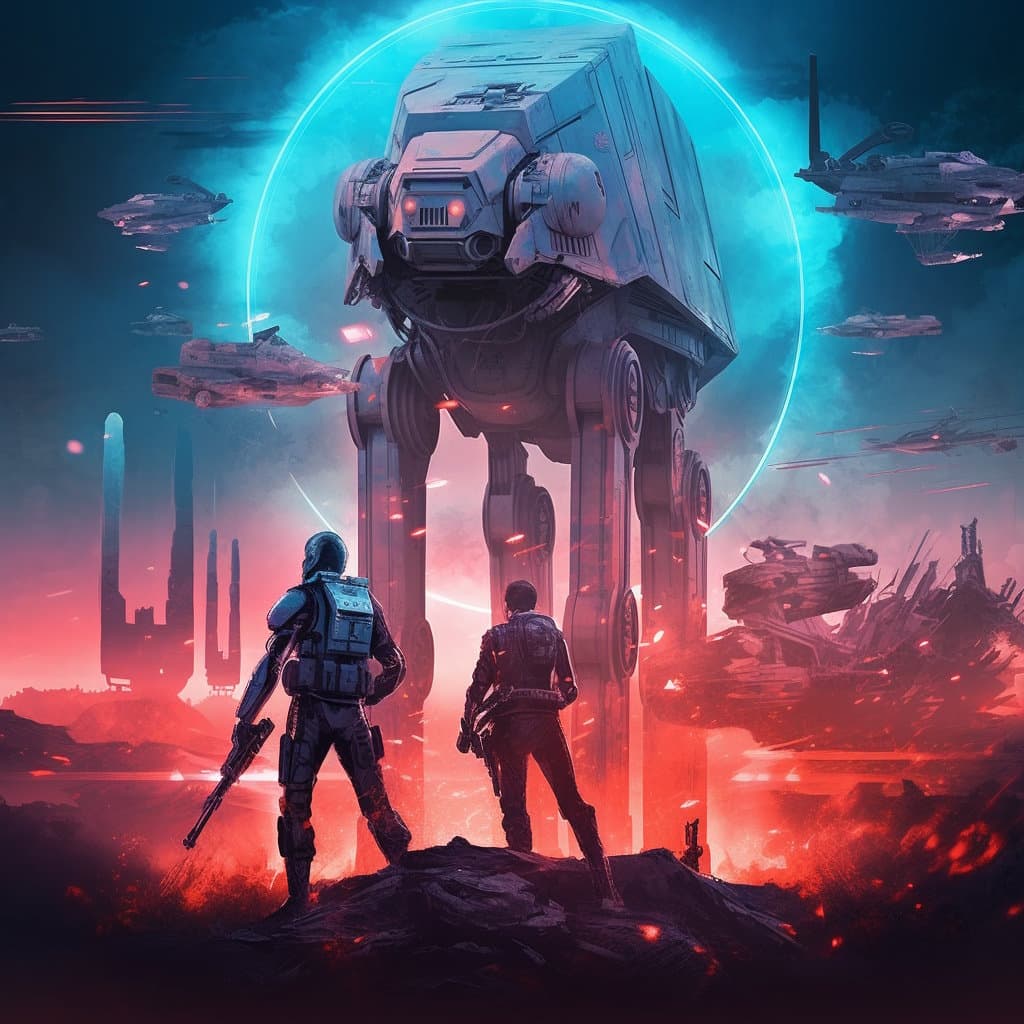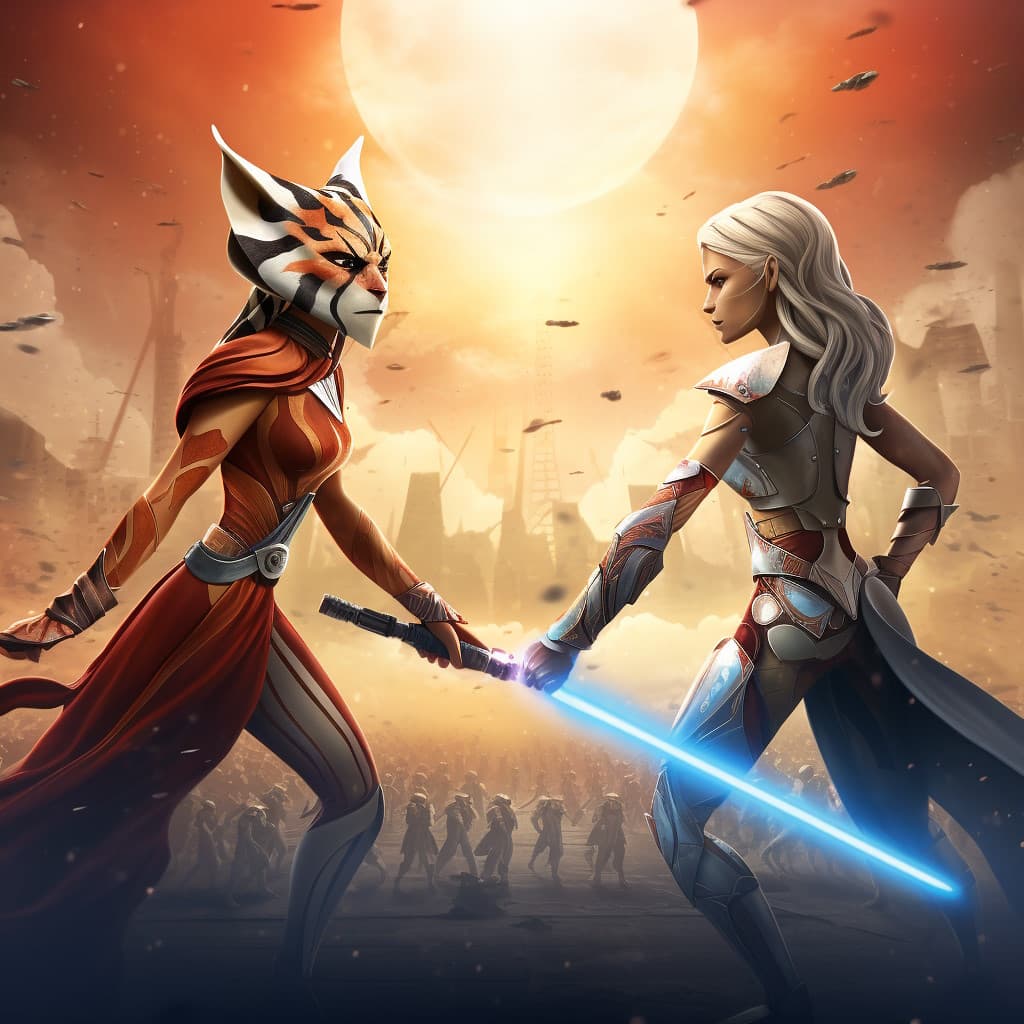In the vast expanse of the Star Wars universe, few characters have captured the hearts of fans as Ahsoka Tano, Din Djarin (The Mandalorian), Boba Fett, and Obi-Wan Kenobi. With each of these iconic figures receiving their own TV series, it’s high time we critically dissect and compare these shows, analyzing their contribution to the Star Wars legacy.
1. Ahsoka: The Togruta’s Tale
Strengths: The ‘Ahsoka’ series dives deep into the life of the former Jedi Padawan, exploring her adventures post-‘The Clone Wars’ and ‘Rebels.’ The series excels in showcasing Ahsoka’s moral dilemmas, her struggle with her identity, and her encounters in the galaxy’s darker corners. Rosario Dawson’s portrayal adds depth to the character, bringing a maturity that aligns with her experiences.
Weaknesses: As previously discussed, the series occasionally falters in pacing and depth, especially when compared to the ‘Ahsoka’ 2016 novel. The inclusion of numerous characters sometimes feels more like fan service than narrative necessity.
2. The Mandalorian: A Lone Gunfighter’s Odyssey
Strengths: ‘The Mandalorian’ is a breath of fresh air, focusing on the gritty, less explored aspects of the Star Wars universe. Din Djarin’s journey from a lone bounty hunter to a protector of Grogu (Baby Yoda) is both heartwarming and action-packed. The series brilliantly melds Western motifs with Star Wars lore, creating a unique viewing experience. The episodic nature of the series allows for diverse adventures, each contributing to the overarching narrative.
Weaknesses: While ‘The Mandalorian’ is largely consistent, there are episodes that feel detached from the main storyline, occasionally leading to narrative fragmentation. Moreover, while the series introduces several intriguing characters, not all of them receive the development they deserve.
3. Obi-Wan Kenobi: The Hermit’s Hidden Years
Strengths: The ‘Obi-Wan Kenobi’ series is a deep dive into the life of the Jedi Master during his exile on Tatooine. It masterfully explores Kenobi’s trauma post the fall of the Republic and his role in watching over a young Luke Skywalker. Ewan McGregor’s return to the role is both nostalgic and refreshing, as he brings a gravitas to Kenobi’s character, reflecting the weight of his past.
Weaknesses: The series, while rich in character exploration, sometimes feels confined, given its focus on Tatooine. The vastness of the Star Wars universe is somewhat underutilized, and there’s a lingering desire to see Kenobi venture beyond the desert planet.
4. The Book of Boba Fett: The Bounty Hunter’s Chronicle
Strengths: ‘The Book of Boba Fett’ delves into the life of one of the galaxy’s most enigmatic bounty hunters, Boba Fett. The series brilliantly bridges the gap between his supposed demise in ‘Return of the Jedi’ and his re-emergence in ‘The Mandalorian.’ The narrative is a deep dive into Fett’s psyche, exploring his code of honor, his aspirations, and his evolution from a mere bounty hunter to a Daimyo of Tatooine. The series shines in its portrayal of the criminal underworld of the Star Wars universe, offering a gritty, no-holds-barred look into the machinations of the galaxy’s various syndicates. Temuera Morrison’s portrayal of Boba Fett is both raw and nuanced, capturing the essence of a character that has been shrouded in mystery for decades.
Weaknesses: While ‘The Book of Boba Fett’ offers a fresh perspective on the character, it occasionally suffers from pacing issues. Some episodes feel like detours rather than integral parts of Boba’s journey. Additionally, while the series does an excellent job of fleshing out Boba’s character, some of the supporting characters feel underdeveloped, serving more as plot devices than meaningful contributors to the narrative.
Integrating into the Larger Narrative: ‘The Book of Boba Fett’ is a crucial addition to the post-Original Trilogy era, shedding light on the power vacuum left in the wake of the Empire’s fall and Jabba the Hutt’s demise. It seamlessly ties into the events of ‘The Mandalorian,’ further enriching the interconnected narrative of the Star Wars TV universe. Boba Fett’s journey from the Sarlacc pit to the throne of Jabba’s palace is emblematic of the larger shifts in the galaxy, with old powers waning and new ones rising.

Cosmic Confluence: While each series stands strong on its own, their confluence paints a comprehensive picture of the Star Wars universe post the prequels and before the original trilogy. Ahsoka represents the remnants of the Jedi Order, Din Djarin showcases the galaxy’s underbelly, Obi-Wan Kenobi embodies the hope that still lingers, Boba Fett solves a complex dilemma of the blurred lines between mercenary ruthlessness and a deeply ingrained code of honor.
In terms of character development, ‘The Mandalorian’ arguably takes the lead, with Din Djarin’s evolution being both profound and palpable. ‘Ahsoka,’ while rich in potential, sometimes struggles to match the depth of its titular character’s previous portrayals. ‘Obi-Wan Kenobi,’ on the other hand, is a deep introspective journey, though it occasionally feels geographically tethered. ‘The Book of Boba Fett’ takes a character, previously defined by his stoic demeanor and iconic armor, and transforms him into a multi-dimensional figure with aspirations, dilemmas, and a code of honor.
In Conclusion: The ‘Ahsoka,’ ‘The Mandalorian,’ ‘The Book of Boba Fett’, and ‘Obi-Wan Kenobi’ series are monumental additions to the Star Wars canon, each bringing its own distinct flavor to the galaxy’s intricate tapestry. Their narratives not only serve as entertainment but also inspire fans to celebrate the saga in diverse ways, from heated debates to Star Wars parties that echo the series’ themes and characters. While each series has its strengths and weaknesses, their collective contribution to the Star Wars lore is undeniable. These are not mere shows; they are pivotal chapters in the ever-evolving Star Wars narrative, enriching our understanding and appreciation of this beloved universe.
